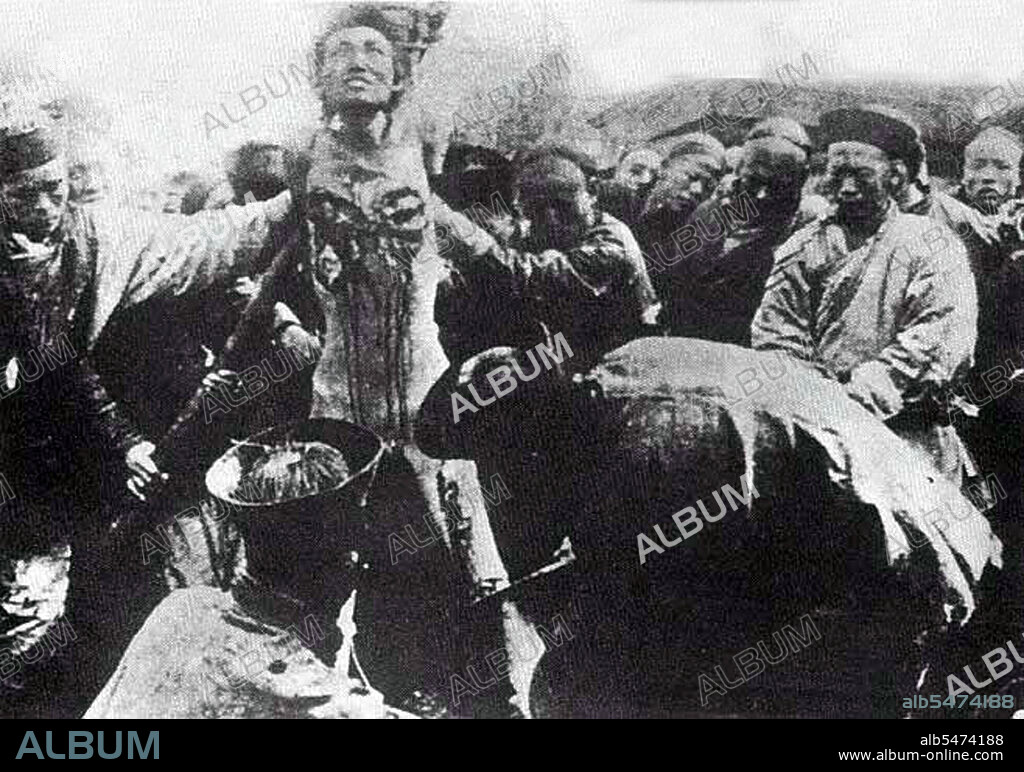alb5474188
An execution by the 'Death of a Thousand Cuts', late Qing period.

|
Ajouter à une autre Lightbox |
|
Ajouter à une autre Lightbox |



Avez-vous déjà un compte? S'identifier
Vous n'avez pas de compte ? S'inscrire
Acheter cette image

Titre:
An execution by the 'Death of a Thousand Cuts', late Qing period.
Légende:
Voir la traduction automatique
Slow slicing' (pinyin: lingchi, alternately transliterated Ling Chi or Leng T'che), also translated as the slow process, the lingering death, or death by a thousand cuts, was a form of execution used in China from roughly 900 CE until its abolition in 1905. In this form of execution, the condemned person was killed by using a knife to methodically remove portions of the body over an extended period of time. The term lingchi derives from a classical description of ascending a mountain slowly. Lingchi was reserved for crimes viewed as especially severe, such as treason and killing one's parents. The process involved tying the person to be executed to a wooden frame, usually in a public place. The flesh was then cut from the body in multiple slices in a process that was not specified in detail in Chinese law and therefore most likely varied. In later times, opium was sometimes administered either as an act of mercy or as a way of preventing fainting. The punishment worked on three levels: as a form of public humiliation, as a slow and lingering death, and as a punishment after death. The latter as to be cut to pieces meant that the body of the victim would not be 'whole' in a spiritual life after death.
Crédit:
Album / Pictures From History/Universal Images Group
Autorisations:
Modèle: Non - Propriété: Non
Questions sur les droits?
Questions sur les droits?
Taille de l'image:
5000 x 3511 px | 50.2 MB
Taille d'impression:
42.3 x 29.7 cm | 16.7 x 11.7 in (300 dpi)
Mots clés:
ASIE • ASIE, CONTINENT • CHINE • CHINOIS • CHINOISE • CONTINENT ASIE • CRIME • CRIMINALITE • DELIT • EXECUTION CAPITALE • EXECUTION • HISOIRE • HISTOIRE • INFRACTION • MORT EXECUTION • MORT, CRIME
 Pinterest
Pinterest Twitter
Twitter Facebook
Facebook Copier le lien
Copier le lien Email
Email
